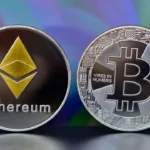From being a small experiment, cryptocurrency has transformed into one of the most significant developments in modern finance. As digital assets become more popular, it’s important for investors, businesses, and even governments to understand the basics, how cryptocurrency works, and what its future holds. Decentralized blockchain technology underpins cryptocurrencies, providing innovative methods for money transfers, data management, and fostering economic inclusivity. They are a threat to established financial systems.
Cryptocurrency Origins and Basics
Cryptocurrency is a type of digital money that uses cryptography to keep transactions safe and check their validity. Cryptocurrencies work on decentralized networks, unlike fiat currencies that are issued by governments and administered by central banks. Usually, these networks employ blockchain technology, which is a distributed ledger that keeps track of transactions on many computers. Such an arrangement makes the network open, unchangeable, and hard to censor.
The unknown inventor or organization known as Satoshi Nakamoto released Bitcoin in 2009, bringing the concept of cryptocurrency mainstream. Satoshi Nakamoto created Bitcoin as a peer-to-peer electronic cash system, operating without government supervision. When it came out, it started a digital revolution that led to the creation of thousands of other cryptocurrencies, such as Ethereum, Solana, Ripple (XRP), and Cardano.
Blockchain Technology and Consensus
The blockchain is at the heart of most cryptocurrencies. It keeps a list of records called blocks that keeps becoming longer. Each block has many transactions, and once recorded, the data in a block cannot be changed without changing all subsequent blocks. This system needs the network to agree on what to do. Different cryptocurrencies employ different ways to reach this agreement. Proof of Work (PoW) is the method that Bitcoin utilizes to secure the network and verify transactions. To do this, miners tackle challenging math problems. This technique takes a lot of energy, but it is quite safe.

Ethereum used to be a Proof of Work (PoW) network, but it switched to Proof of Stake (PoS) with Ethereum 2.0. This change cut down on energy use and sped up transactions. Another new development in this area is smart contracts, which are self-executing agreements with their conditions expressed in code. Ethereum pioneered the use of smart contracts, enabling decentralized apps (dApps) to function without a central authority. These new ideas are the basis for fields like decentralized finance (DeFi), non-fungible tokens (NFTs), and decentralized autonomous organizations (DAOs).
Understanding Decentralized Finance (DeFi)
Decentralized Finance, or DeFi, is one of the most important things that has happened in the world of cryptocurrencies. DeFi platforms use decentralized blockchain protocols to try to reproduce traditional financial services like lending, borrowing, insurance, and trading. Smart contracts let users talk to each other directly, so they don’t require banks or brokers to do business. Uniswap (a decentralized exchange), Aave (a decentralized lending system), and MakerDAO (which runs the DAI stablecoin) are all DeFi apps that have attracted billions in total value locked (TVL).
These platforms let people earn interest, provide liquidity, and trade assets in real time with no trouble. In traditional finance, access is typically based on where you live, who you are, and your credit score. But anyone with an internet connection and a digital wallet may use DeFi protocols. This significantly impacts financial inclusion, particularly in regions with limited banking access.
Crypto Investment Goes Mainstream
What started as a grassroots movement is now becoming part of the mainstream. Companies including Tesla, MicroStrategy, and Square have put money into Bitcoin. Cryptocurrency transactions are now possible on payment platforms like PayPal and Visa. Fidelity and BlackRock are two asset managers who offer crypto-related investment products. Traditional banks are also starting to offer custodial services for digital assets.

More and more people are seeing cryptocurrencies as both speculative investments and long-term stores of value, which has contributed to their adoption. People often compare Bitcoin to digital gold because there isn’t a lot of it and it doesn’t lose value over time. In the meantime, Ethereum is being promoted as a decentralized computing platform for the future of the internet.
Global Crypto Regulatory Landscape
Regulation is still a big issue in the development of bitcoin. Blockchain is open and clear, but its pseudonymous nature has made people worry about illegal activities and financial supervision. Governments all across the world are working hard to create rules that will safeguard consumers and keep the economy stable.
The SEC and CFTC are two authorities in the US that are trying to figure out how digital assets fit within the current legal system. The EU’s Markets in Crypto-Assets (MiCA) rule wants to make sure that all member states follow the same rules. At the same time, the rise of Central Bank Digital Currencies (CBDCs) shows that governments want to use blockchain technology in a safe way. China has already started testing the digital yuan in some places, and the U.S. and EU are looking into doing the same.
Final thoughts
There has been a lot of talk about how cryptocurrency affects the environment, especially ones that use PoW like Bitcoin. Mining uses a lot of energy, which has led to requests for more environmentally friendly options. Many networks are switching to more sustainable models like PoS, and some miners are moving toward renewable energy sources in response.
People are working on layer 2 scaling solutions, such as the Lightning Network for Bitcoin and rollups for Ethereum, to make networks more efficient, lower transaction fees, and lessen congestion. These new ideas are vital for getting more people to use blockchain technology, especially as it spreads to areas like gaming, supply chain management, and digital identification.







